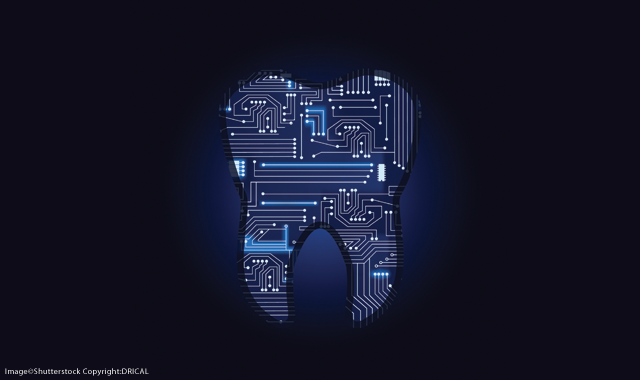The next big thing in dentistry is already here
What will dentistry look like, and how will it operate, when it is integrated with primary care?

How much is good health care worth? Is it worth $8,233 per year per person? That’s what we spend in the U.S. That figure is more than 2.5 times what most developed nations in the world spend on health care, including the relatively rich European countries like France, Sweden and the U.K.
In the U.S., healthcare costs are now 17.6 percent of the GDP; in Australia, it is 9.4 percent of the GDP; Germany 11.3 percent of the GDP; and France 11.6 percent of the GDP.
What’s predicted is that by 2025 healthcare costs in the U.S. will be at or above 20 percent or more of the GDP. Unsustainable. Untenable. Unmaintainable.
Trending article: How to grow your dental practice in a competitive market
Now, put dentistry in the middle of this health care cost quandary.
- Fact: Percentage of patients per population who see a dentist is dipping. Studies show this is due primarily to cost, but also availability of dentists.
- Fact: There is a well-established connection between oral disease and chronic systemic diseases. Some of these inter-relationships are now well proven, while others continue to be explored.
- Fact: Dentistry significantly improves treatment outcomes for certain chronic diseases.
Trending article: 7 more of the scariest medical conditions with links to oral health
Given these facts, significant pressures will be laid on dentistry-economic pressure, political pressure and social pressure. Dentistry will feel a lot more weight to figure out how to treat more patients at a cost that’s within the health care system’s budget.
People who do not have access to a dentist-especially if they have certain chronic diseases-will find their disease state will accelerate at a much more rapid rate and be more severe. The bottom line is without dentistry, it will cost the health care system considerably much more money to treat and manage certain chronic diseases.
Now what?
Continue to page two to read more...
Impact on dentistry
At $3 trillion dollars, the total healthcare system dwarfs dentistry at $140 billion. Systems rule; they always have and they always will. Dentistry is part of a system, although dentistry has been freely operating independently since it became a formal profession. But the healthcare system is dramatically changing and dentistry’s isolation is coming to an end.
The system determines the kind of players required to make the system work. The system determines how the players play. The system therefore determines how dentists and primary care will best serve the system. Examples abound of the supremacy of systems-the New England Patriots, Zappos, Boeing, Aspen, the Marines. The system is the ultimate determinant.
All the stakeholders in the healthcare system-insurance companies, clearing houses, hospitals, employers, government, suppliers, financial institutions, dental and medical schools, social media, professional organizations and providers-know that treating chronic disease by adding dentistry keeps people healthier and more productive, reduces their co-pays, keeps absenteeism down and holds the line on how much money is spent on health care.
Trending article: How EHRs are changing oral-systemic health
Currently, dentistry is based on a fee-for-service model. You do a procedure, you get paid for it. The more procedures you do, the more you get paid. The more expensive the procedure, the more money you make. Dentistry has always been a for-profit business. That’s what worked in the old health care system, but it seems it won’t work nearly as well in this newly emerging system.
Costs need to be controlled throughout the entire system. That’s obvious. Efficiencies need to be improved. That’s obvious. Chronic diseases are the biggest guzzlers of the health care dollar. That’s obvious. Dentistry can be a game changer. For example, when you add dentistry to the mix, you save $7,000 a year per patient on a substantial population of diabetic patients.
With these clinical and cost-saving outcomes, what kind of pressures will this put on dentistry when the system stops looking at dentists as independent operators? Dentists, like it or not, will be viewed more and more as integratable pieces within the overall health care system.
Trending article: Study finds limiting dental benefits increases hospital visits
What’s going to happen?
What will dentistry look like, and how will it operate, when it is integrated with primary care? Ask Kaiser-Permanente Northwest, which has a diverse and highly skilled group of 145 general and specialty dentists as well as a broad PPO network with more than 6,000 dentists in Oregon and Washington. Kaiser is moving powerfully forward integrating dentists into the patients’ overall health care.
What will dentists do when they are held as an integral part of the healthcare ‘team’ with the other players? Being responsible to and within a group is a whole lot different than being only responsible to yourself.
Continue to page three to read more...
Vertically integrated systems
As the healthcare system changes, one trend that is muscularly emerging is the vertically integrated system. These systems include dentists. A vertically integrated system is an arrangement in which the supply chain of a company (in this case a hospital or insurance company) is owned by that company. Usually each member of the supply chain produces a different product or market-specific service, and the products combine to satisfy a common requirement.
An example of an integrated system is your local hospital, which is owned by a large hospital system that owns and operates multiple hospitals and outpatient clinics. They own the medical-dental office buildings just off campus. They own the land on which the buildings sit. They own the physician practices-primary, secondary and tertiary specialists-that occupy their buildings. And they also own a ‘chain’ of ancillary services such as hospice, pharmacy and in-home nursing services.
The hospital system wants to own as much of the downstream and upstream entities of their supply chain because vertical integration yields results. Less time. Less money. Less people to deal with. Less hassle. Less aggravation. Far more cost control.
Trending article: Why smart consumers will determine the future of dentistry
Conclusion
Hospitals such as Kaiser and insurance companies like Guardian are currently in committed action for vertical integration. Just as consolidation, which is basically horizontal integration, caught fire, so will vertical integration.
It is inevitable, as the healthcare system pushes for better results at reduced costs, that dentistry will be required to restructure itself to integrate with the other system players.
Solo practices will not be able to adapt to this system. Some managed group practices will be able to redesign themselves to successfully partner with the other stakeholders and be players within an integrated system.
Entrepreneurs who see the future as a juncture of horizontal and vertical integration, those who know how to truly partner with the other players in the supply chain, will have the opportunity to create something that can make a real and lasting difference to healthcare as well as be handsomely rewarded.
Get ready-vertical integration is the next big thing.
How Dentists Can Help Patients Navigate Unforeseen Dental Care
December 12th 2024Practices must equip patients with treatment information and discuss potential financing options before unexpected dental treatments become too big of an obstacle and to help them avoid the risk of more costly and invasive procedures in the future.
